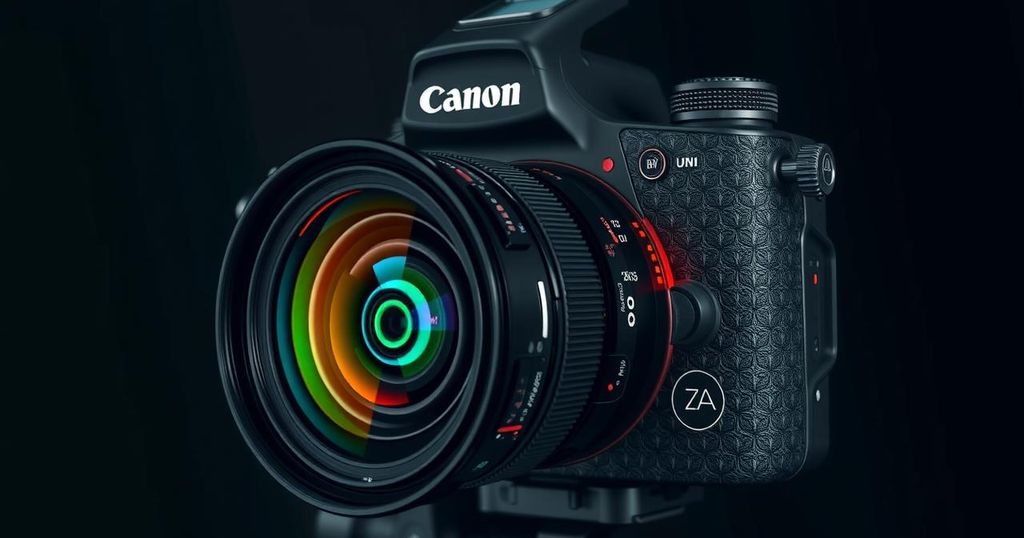Current Trends Transforming the Camera Technology Landscape in February 2024
February 2024 reveals striking shifts in camera technology, highlighting the rise of 360-degree vehicle cameras enhancing safety, nostalgic products like the Lego Polaroid Camera, and the game-changing role of AI in photography. Industrial innovations prioritize safety, video editing tools expand in response to content creation demands, and the important challenge of differentiating real from AI-generated photos persists, emphasizing a complex yet promising future for the industry.
In February 2024, the camera technology landscape is witnessing transformative changes that redefine our perception of authenticity, safety, and creative expression. The emergence of 360-degree vehicle cameras signifies a monumental shift towards enhanced safety in automotive environments, while innovative products like the Lego Polaroid Camera entice consumers’ nostalgia fused with modern technology. Furthermore, artificial intelligence is not only revolutionizing photography but also tackling the challenge of distinguishing authenticity amidst a surge of AI-generated images. Industrial safety is prioritized with the rise of explosion-proof cameras, and as the content creation industry thrives, video editing tools are more pivotal than ever. The ongoing struggle for the industry is balancing technological advancements with ethical considerations, particularly in maintaining user privacy and digital veracity.
The past month has unveiled a spectrum of innovations and challenges within the camera technology sector. Foremost is the significant projected growth of the global market for 360-degree vehicle cameras, boosted by Verge Motorcycles’ state-of-the-art offerings that enhance driver safety through advanced visual capabilities. This shift is transforming automotive experiences from mere luxury to integral safety features essential for modern driving.
Coupled with automotive advancements, the nostalgic allure of the Lego Polaroid Camera encapsulates a longing for simpler times while embracing contemporary functionalities. This synergy between past and present in products resonates deeply with consumers, hinting at an emerging trend where nostalgia drives innovation within the competitive electronics market.
The impact of artificial intelligence cannot be overstated; it is reshaping the fabric of photography itself. Companies like Sony, Canon, and Nikon are spearheading initiatives to develop technologies that confirm the authenticity of images, countering the rising tide of fake visuals generated by AI. Further, Samsung’s ambitious plan to launch AI-enabled cameras with human-like perception by 2027 sets a high bar for future developments.
Industrial sectors are also adapting, emphasizing safety with the introduction of explosion-proof digital cameras designed for hazardous environments. Such innovations underline the industry’s commitment to disaster prevention, showcasing a landscape where safety and technological prowess coalesce. Concurrently, the burgeoning content creation industry presents vast opportunities, propelled by platforms like YouTube and editing software such as Mac, escalating the demand for sophisticated video editing tools and cameras optimized for content creators.
Yet, as advancements unfold, challenges persist. The industry grapples with the intricacies of distinguishing genuine photographs from AI-created fakes, a quest underscored by the importance of integrity in digital imagery. Manufacturers must navigate these complexities while ensuring user privacy and seamless experiences with their innovations.
Looking ahead, the road for camera technology appears promising yet complex. With anticipated increases in demand for innovative video editing software and automotive cameras with enhanced safety features, companies must stay vigilant and adaptive. The ethical implications of AI’s integration into consumer technology must remain front and center to foster trust and market stability. In this rapidly evolving sector, knowledge is power; businesses that remain informed about the latest trends and technologies will be better positioned to capitalize on opportunities that arise.
Camera technology is at a pivotal moment of evolution, intersecting with consumer desires for safety, authenticity, and creative expression. With the rapid growth of content creation and video production demands, understanding the latest innovations and emerging trends is vital for stakeholders in the field. From AI’s transformative role in combating digital deception to the revival of nostalgic products, there’s a delightful blend of innovation and tradition that shapes future opportunities within the industry. The technology landscape is not merely about advancing optics; it’s about weaving a narrative that harmonizes consumer expectations with cutting-edge solutions.
The camera technology industry is currently navigating a transformative period characterized by growth and innovation. With the rise of advanced vehicle safety features, a blend of nostalgic consumer products, and the crucial role of AI in ensuring image authenticity, the sector is rich with opportunities. As challenges around digital integrity and user privacy emerge, businesses must strategically adapt and anticipate consumer demands to remain competitive. Staying informed about these developments will empower stakeholders to seize emerging opportunities, fostering growth in this dynamic market.
Original Source: www.startus-insights.com




Post Comment